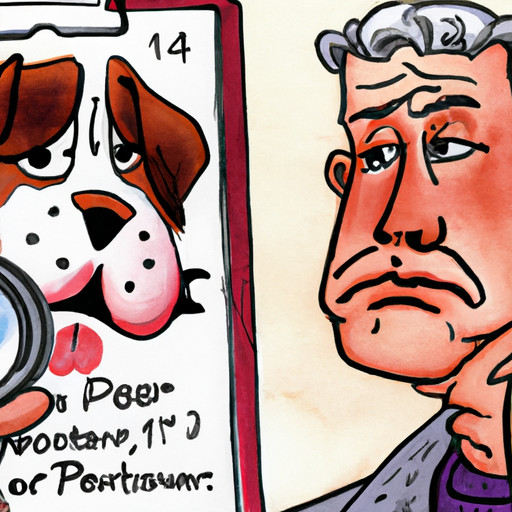Dealing with the health and well-being of your beloved pet can be a daunting task. This article aims to shed light on a common aspect of female dog health: the length of their bleeding cycle during heat.
Understanding the Dog’s Heat Cycle
The first thing you need to understand is the heat cycle of a dog. Female dogs typically have their first heat cycle between six and nine months of age. The heat cycle lasts for about three weeks, but the bleeding or spotting usually lasts for about ten days to two weeks within that cycle.
The Four Stages of the Heat Cycle:
- Proestrus: This stage lasts approximately 9 days, but can vary from 3 to 17 days. During this phase, the female dog may attract males but is not yet ready to mate. You might notice bloody discharge during this stage.
- Estrus: This stage lasts around 9 days, but can vary from 3 to 21 days. Here, the female is receptive to males and can get pregnant. The discharge changes from bloody to straw-colored.
- Diestrus: This stage lasts approximately 56 days, regardless of whether the dog is pregnant or not.
- Anestrus: This is the resting stage where no sexual activity occurs. It typically lasts 4-5 months.
Signs and Symptoms of Bleeding in Dogs
During the Proestrus and Estrus stages, female dogs may exhibit various signs and symptoms, including:
- Swelling of the vulva
- Changes in behavior (more affectionate or clingy)
- Licking the genital area more often
- Spotting or bleeding
- Increased urination
Managing Your Dog’s Bleeding
Managing your dog’s bleeding can be a bit tricky, especially if it’s your first time dealing with it. Here are some tips:
- Use specially designed dog diapers or pants to manage the bleeding and keep your home clean.
- Keep your dog indoors to avoid attracting male dogs.
- Regularly check your dog’s diaper or pants and change them as necessary.
- Keep your dog clean and comfortable.
When to Seek Veterinary Attention
While the bleeding is a normal part of the heat cycle, excessive bleeding or bleeding outside of the normal heat cycle can indicate a problem. If you notice any of the following, seek veterinary attention immediately:
- Bleeding lasts for more than three weeks.
- Your dog appears to be in pain.
- There is a foul-smelling discharge.
- Your dog is lethargic or refusing to eat.
Frequently Asked Questions
Q: Do all female dogs bleed?
A: Most do, but some may clean themselves so well that you may not notice it.
Q: How often do dogs go into heat?
A: Usually, dogs go into heat twice a year, but this can vary depending on the breed and individual dog.
Q: Can I still walk my dog when she is in heat and bleeding?
A: Yes, but it’s best to do so in private areas to avoid attracting male dogs.
Q: Should I get my dog spayed to stop the bleeding?
A: Spaying is a personal decision that should be discussed with your vet. It does stop the heat cycles and the associated bleeding.
Q: Is it normal for my dog to bleed outside her heat cycle?
A: No, this could be a sign of a health problem. It’s best to consult your vet.
Knowledge and understanding of your pet’s health are key to ensuring they live a happy, healthy life. Be observant, patient and consult with your vet whenever you’re unsure about anything. Remember, you’re the best caregiver your dog could ask for!



